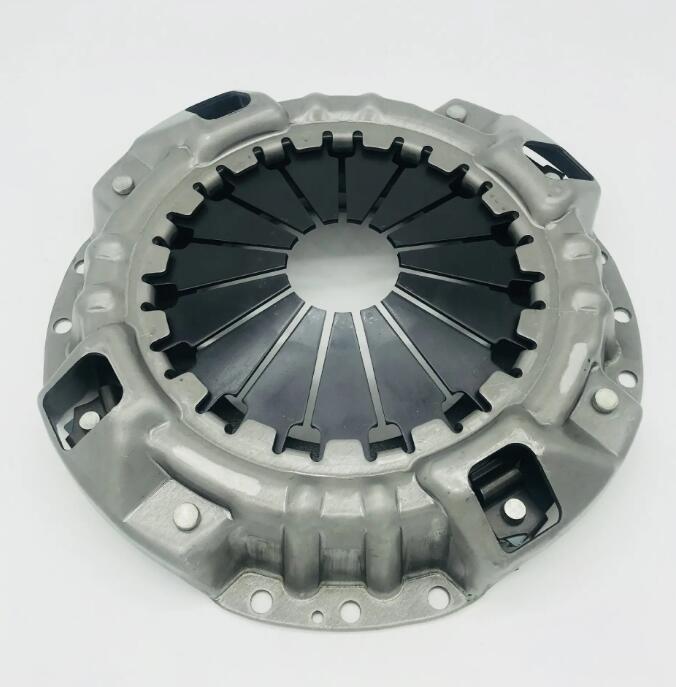Classification of clutch

Clutches are divided into electromagnetic clutch, magnetic particle clutch, friction clutch and hydraulic clutch:
Electromagnetic clutch
The clutch engagement and disengagement are controlled by the power on and off of the coil.
The electromagnetic clutch can be divided into: dry single-plate electromagnetic clutch, dry multi-plate electromagnetic clutch, wet multi-plate electromagnetic clutch, magnetic particle clutch, sliding electromagnetic clutch, etc.
The working mode of electromagnetic clutch can also be divided into: power-on combination and power-off combination.
Dry single-piece electromagnetic clutch: when the coil is energized, magnetic force is generated to close the "armature" plate, and the clutch is in the engaged state; When the coil is powered off, the "armature" bounces back and the clutch is in the separation state.
Dry single-piece electromagnetic clutch: when the coil is energized, magnetic force is generated to close the "armature" plate, and the clutch is in the engaged state; When the coil is powered off, the "armature" bounces back and the clutch is in the separation state.
Magnetic particle clutch
Place magnetic particles between the drive and driven components. When the power is turned off, the magnetic particles become loose. When the power is turned on, the magnetic particles are combined and the driving and driven components rotate simultaneously.
Advantages: The torque can be adjusted by adjusting the current to allow greater sliding. Disadvantages: when the slip is large, the temperature rise is large, and the relative price is high.
Sliding electromagnetic clutch: When the clutch works, there must be a certain speed difference between the driving and driven components to transmit torque. Torque depends on magnetic field strength and speed difference. The excitation current is constant, and the speed decreases sharply with the increase of torque; The torque is constant, the excitation current is reduced, and the speed drop is more serious.
Since there is no mechanical connection between the main components and the driven components, no wear consumption, no magnetic particle leakage, and no impact, the sliding electromagnetic clutch can be used as a stepless transmission by adjusting the excitation current, which is its advantage. The main disadvantage of the clutch is that the eddy current in the rotor will generate heat, which is proportional to the speed difference. At low speed, the efficiency is very low. The efficiency value is the speed ratio of the main shaft and the driven shaft, i.e η= n2/n1
The mechanical transmission system suitable for high-frequency action can combine or separate the driven part and the driving part when the driving part is running.
When the driving part and the driven part are separated, the driving part rotates and the driven part is stationary; The driving part and the driven part are in the joint state, and the driving part takes the driven part to rotate.
It is widely used in machine tools, packaging, printing, textile, light industry and office equipment.
The electromagnetic clutch is generally used in the medium with an ambient temperature of - 20~50 ℃, humidity of less than 85% and no explosion hazard, and its coil voltage fluctuation shall not exceed ± 5% of the rated voltage.
Friction clutch
Friction clutch is the most widely used and oldest clutch type. It is basically composed of four parts: active part, driven part, compression mechanism and control mechanism. The driving and driven components and the pressing mechanism are the basic structures to ensure that the clutch is in the engaged state and can drive the power, while the control mechanism of the clutch is mainly the device to release the clutch. In the process of separation, press the clutch pedal to first eliminate the free clearance of the clutch in the free travel, and then generate the separation clearance in the working travel, and the clutch is separated. During the engagement process, gradually release the clutch pedal, and the pressure plate moves forward under the action of the compression spring. First, remove the separation clearance and apply sufficient compression force on the working surfaces of the pressure plate, driven plate and flywheel; After that, the release bearing moves backward under the action of the return spring to generate free clearance and the clutch is engaged.
Hydraulic clutch
The hydraulic clutch uses fluid (usually oil) as the transmission medium. Compared with the mechanical clutch, in addition to various changes in transmission characteristics, it also mainly absorbs the vibration and impact caused by the rotation of the driving shaft and the driven shaft.
The structure of the hydraulic clutch comprises an input shaft with an acceleration gear train; The working fluid flow chamber is composed of impeller, driven wheel and impeller shell; The output shaft is provided with a driven wheel, and the driven wheel and impeller can be operably combined; Generally, the impeller shell and impeller are made of materials with small specific gravity and large stress bearing range to reduce centrifugal stress.





















